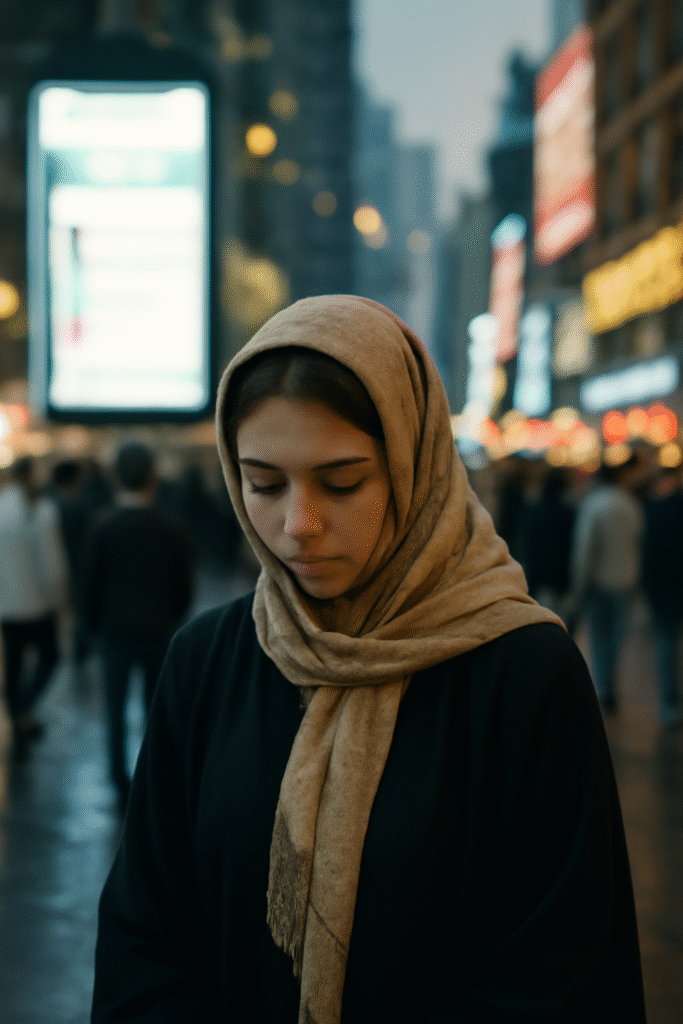Por muitos anos, as histórias de inovação pareciam surgir sempre dos mesmos lugares — Vale do Silício, Londres, Tóquio. Eram celebrados como os berços do futuro.
Mas o século XXI nos ensinou algo essencial: a verdadeira transformação cultural e tecnológica não acontece apenas nesses grandes centros globais.
Ela floresce nas margens — nas periferias criativas — onde as pessoas fazem muito com poucos recursos, onde a diversidade alimenta a imaginação e onde o propósito impulsiona o progresso.
As histórias mais transformadoras já não são exclusivas de universidades prestigiadas ou incubadoras bilionárias. Elas também emergem de favelas, mercados locais, vilarejos rurais e comunidades culturais que atuam longe dos holofotes.
Essas narrativas nos lembram que inovação não é apenas ter a melhor tecnologia — é ter visão, comunidade e coragem para fazer diferente.
Inovação a partir das Bordas: Redesenhando o Mapa Criativo

A globalização conectou o mundo, mas também nos lembrou do poder do local. Em toda a América Latina, África e Ásia, o que antes era visto como “periférico” agora é reconhecido como berço de ideias adaptadas a realidades complexas.
Desses contextos surge um tipo de criatividade ancorada na sustentabilidade, colaboração e resiliência — uma criatividade que coloca as pessoas no centro, não as máquinas.
As margens, ao contrário do que se imagina, muitas vezes pulsam no coração da inovação.
É nessas regiões que a necessidade encontra a inventividade, e as limitações se transformam em oportunidades.
Essa é a alma da inovação frugal — soluções práticas, acessíveis e criativas, nascidas da escassez, mas guiadas pela inteligência.
Em um mundo exausto pelo excesso de consumo, essas invenções de base comunitária convidam os países desenvolvidos a repensarem seus excessos e redescobrirem a simplicidade.
Histórias Inspiradoras de Gênio Local
🔹 Natura e as Comunidades Amazônicas (Brasil)
A empresa brasileira Natura é um dos exemplos mais marcantes de inovação local com impacto global.
Em parceria com comunidades indígenas e ribeirinhas da Amazônia, a Natura desenvolve produtos que celebram a biodiversidade, mantendo as populações locais no centro do processo produtivo.
Aqui, tecnologia e tradição coexistem: drones monitoram a saúde da floresta enquanto o conhecimento ancestral orienta práticas sustentáveis de coleta.
Esse modelo não apenas gera renda, como também protege ecossistemas e preserva saberes tradicionais — provando que inovação pode respeitar, ao mesmo tempo, pessoas e natureza.
🔹 M-Pesa (Quênia): Bancos Móveis Antes da Revolução Fintech
Muito antes das Fintechs ocidentais ganharem força, o M-Pesa, sistema de pagamentos móveis lançado no Quênia em 2007, transformou a economia local.
Ele permitiu que milhões de pessoas sem acesso a bancos transferissem dinheiro, pagassem contas e realizassem transações usando apenas um celular simples.
Seu sucesso se espalhou pela África e além — um exemplo claro de inovação contextual, criada não a partir da abundância, mas das necessidades reais do cotidiano.
🔹 Aravind Eye Care (Índia): Saúde Acessível para Todos
Na Índia, o Aravind Eye Care System desenvolveu um dos programas de cirurgia de catarata mais eficientes do mundo.
Inspirado em modelos industriais, mas guiado por uma missão humanitária, o hospital realiza milhões de cirurgias a custos mínimos, mantendo padrões médicos de excelência.
Seu impacto não está apenas na tecnologia, mas na ética e na gestão centrada no ser humano — uma combinação que inspirou modelos semelhantes em diversos países.
🔹 Favela Tech: O Poder Criativo das Comunidades (Brasil)
Iniciativas como G10 Favelas, Favela Inc. e PerifaCode mostram que territórios marginalizados são, na verdade, laboratórios vivos de inovação digital e social.
Em São Paulo, jovens das periferias aprendem programação, desenvolvem aplicativos e criam soluções para desafios locais — de projetos de economia circular a plataformas de emprego.
Essas ideias não nascem em aceleradoras corporativas, mas em vielas estreitas cheias de talento, resiliência e espírito comunitário.

O local tem a cultura como fonte global de inspiração
A inovação não é apenas tecnológica. Ela também é cultural, simbólica e espiritual.
Do artesanato ao design, da música ao cinema, da dança africana à narrativa latino-americana, a cultura local vem conquistando o mundo por meio da sua autenticidade.
Veja alguns exemplos:
A ascensão do Afro futurismo:
Artistas e pensadores como Janelle Monáe, Beyoncé e diversos coletivos criativos e tecnológicos africanos imaginam o futuro a partir da identidade negra — fundindo mitologias ancestrais, ficção científica e narrativas de libertação.
Uma nova onda do cinema:
Diretores como Kleber Mendonça Filho (Brasil) e Wanuri Kahiu (Quênia) desafiam estereótipos e ampliam o imaginário cultural por meio de histórias enraizadas em experiências locais.
Moda e design sustentáveis:
Marcas emergentes do Brasil, da Índia e da África estão reinventando a moda ao usar tecidos tradicionais, materiais reciclados e ferramentas digitais — criando peças que não são apenas belas, mas profundamente conscientes.
A comida como narrativa cultural:
Chefs como Leonor Espinosa (Colômbia) e Bela Gil (Brasil) estão redefinindo a gastronomia ao resgatar ingredientes locais e saberes culinários ancestrais, transformando a cozinha em diálogo cultural.
Esses movimentos revelam que o futuro da cultura não nascerá apenas nos centros de poder global — mas nas comunidades onde a criatividade serve tanto à sobrevivência quanto à expressão.
Lições Escondidas Nessas Histórias
O que conecta um aplicativo financeiro do Quênia, uma cooperativa amazônica e um artista periférico brasileiro?
Todos nascem de uma relação profunda com o território e o propósito.
Enquanto os grandes polos buscam escala, as periferias buscam pertencimento — e é justamente isso que dá origem a um modelo de inovação mais ético e sustentável.
Algumas lições que essa revolução silenciosa nos oferece:
Escute as bordas. Comunidades periféricas são fontes inesgotáveis de soluções inteligentes, simples e criativas.
Valorize o saber local. O conhecimento popular, artesanal e ancestral também é tecnologia.
Descentralize a inovação. Grandes ideias não têm CEP; toda voz merece visibilidade.
Lidere com propósito. Mudança sem propósito é moda; mudança com propósito é transformação.
Invista em educação e acesso. A verdadeira inclusão começa quando todas as pessoas têm as ferramentas para criar.

O Futuro Muitas Vezes Começa Onde Menos Esperamos
As histórias que estão moldando o amanhã não são escritas apenas em laboratórios de alta tecnologia ou em salas de conselho globais.
Elas nascem em comunidades resilientes e criativas, enraizadas em identidade e significado.
O futuro global está sendo reinventado localmente.
A cultura global é um mosaico em movimento — cada peça, cada voz, cada vilarejo acrescentando novos padrões de cor, linguagem e propósito. Quanto mais ampliamos o olhar, mais claro se torna:
A inovação não é um privilégio do centro; é um direito e um potencial de todos.
A verdadeira inovação não brota onde os recursos são mais abundantes — mas onde o sentido é mais profundo.
